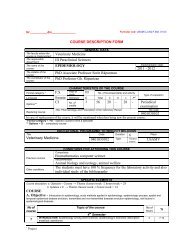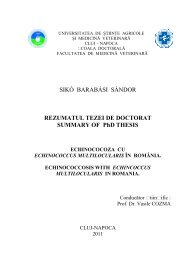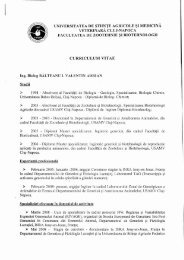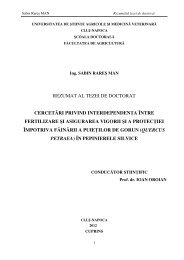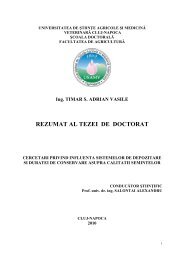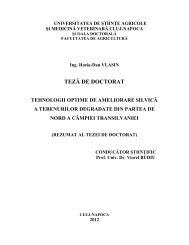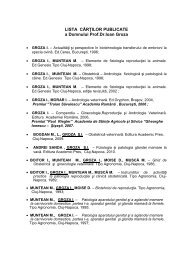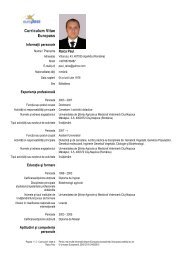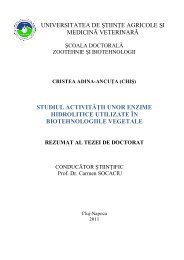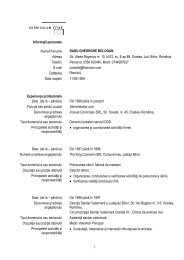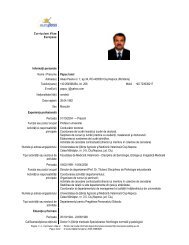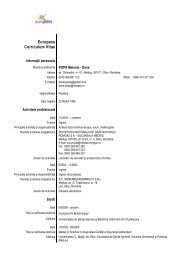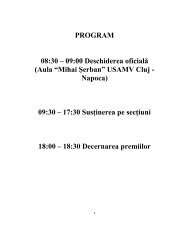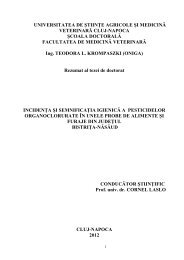Rezumatul tezei de doctorat - USAMV Cluj-Napoca
Rezumatul tezei de doctorat - USAMV Cluj-Napoca
Rezumatul tezei de doctorat - USAMV Cluj-Napoca
You also want an ePaper? Increase the reach of your titles
YUMPU automatically turns print PDFs into web optimized ePapers that Google loves.
estimation of the spawns infestation <strong>de</strong>gree, with marks from 0 to 4, at 48, 96 and 144 hours.<br />
The data interpretation was ma<strong>de</strong> by estimating the medium score of all the samples from<br />
the same thermal gradient, the differences being percentual expressed.<br />
The marks used have the following significations:<br />
0 – uninfested<br />
1 – very weak infested<br />
2 – weak infested<br />
3 – medium infested<br />
4 –strong infested<br />
I.3.3. Culture media used<br />
The scientific literature un<strong>de</strong>rlines the fact that, generally, in the fungi cultures<br />
<strong>de</strong>velopment could be used either solid media, or liquid ones. Liquid media allow the<br />
<strong>de</strong>velopment of fungal mycelium in a large quantity, that could be used in techniques for<br />
DNA extraction (Dieguez-Uribeondo and al., 2007; Fernan<strong>de</strong>z-Benitez and al., 2008).<br />
In this research we utilized comparatively 2 solid media: Potato Dextrose Agar (PDA)<br />
and Sabouraud 2% Glucose Agar (SGA), and 2 liquid media: Potato Dextrose Broth (PDB)<br />
and Sabouraud Dextrose Broth (SDB).<br />
The spawns were sterile collected in Petri dishes and washed with distilled water<br />
containing 100 mg L -1 Penicillin G potassium salt. Then, were inoculated in two solid<br />
media: Potato Dextrose Agar (PDA) and Sabouraud 2% Glucose Agar (SGA), and for<br />
preventing the bacterial growing, we ad<strong>de</strong>d the same antibiotic, in the recommen<strong>de</strong>d<br />
concentration. The colonies were preserved then on PDA and SGA media, in the incubator<br />
for 3 days, at the mentioned temperatures (10, 15 and 22°C). In this period we observed<br />
Saprolegnia colonies growing speed and their diameter (adapted after Fernan<strong>de</strong>z-Benitez<br />
and al., 2008). The original contribution consisted in the fact that we used two comparative<br />
solid culture media and three temperature gradients for each medium.<br />
49



